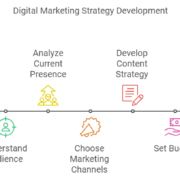
In the dynamic landscape of business, setting goals is a critical aspect of strategic planning. Two distinct categories that businesses often focus on are short-term and long-term goals. While both are essential, they serve different purposes and require distinct approaches. This article delves into the nuances of short-term vs. long-term business goals, exploring their definitions, characteristics, and the importance of striking a balance between them.
Short-Term Business Goals: Navigating the Immediate Future
Definition
Short-term goals typically refer to objectives that a company aims to achieve within a relatively brief period, usually ranging from a few weeks to a year. These goals are often characterized by their immediacy and are closely tied to the day-to-day operations of the business.Characteristics
- Tactical in Nature: Short-term goals are often tactical, focusing on the operational aspects of the business. They involve actions that can be implemented quickly to address immediate challenges or capitalize on opportunities.
- Measurable and Specific: Short-term goals are usually concrete and measurable, providing clear criteria for success. Achieving these goals often involves meeting specific targets or milestones within a short timeframe.
- Quick Return on Investment (ROI): Businesses expect to see results from short-term goals relatively quickly. These goals are designed to yield immediate benefits, contributing to the company’s financial health in the short run.
Examples of Short-Term Goals
- Increase Monthly Sales by 10%: Implementing short-term marketing strategies or promotions to boost sales within the next quarter.
- Reduce Operating Costs by 5%: Identifying and implementing cost-cutting measures to improve profitability in the short term.
- Launch a New Product Line: Introducing a new product to the market and gauging its initial success within the next six months.
Long-Term Business Goals: Nurturing Sustainable Growth
Definition
Long-term business goals extend beyond the immediate future, encompassing objectives that a company aspires to achieve over an extended period, often spanning several years. These goals are strategic in nature, focusing on the overarching vision and sustainable growth of the business.Characteristics
- Strategic and Visionary: Long-term goals are strategic, aligning with the company’s vision and overarching mission. They guide the business towards sustained growth and market leadership.
- Complex and Comprehensive: Unlike short-term goals, long-term goals are often multifaceted and require comprehensive planning. They involve substantial investments in resources, time, and expertise.
- Focus on Innovation and Adaptability: Long-term goals often involve fostering innovation and adaptability to ensure the company remains competitive in a rapidly evolving market.
Examples of Long-Term Goals
- Expand Market Presence Globally: Developing a comprehensive strategy to enter new international markets over the next five years.
- Become Industry Leader in Sustainability: Implementing environmentally friendly practices and aiming to become a leader in sustainable business practices within the next decade.
- Achieve 20% Year-Over-Year Revenue Growth: Implementing a long-term sales and marketing strategy to achieve consistent and substantial revenue growth over the next five years.
The Importance of Balancing Short-Term and Long-Term Goals
Achieving Stability and Growth
Balancing short-term and long-term goals is crucial for a business’s stability and sustained growth. Short-term goals address immediate challenges, ensuring the company’s day-to-day operations run smoothly. Simultaneously, long-term goals provide a roadmap for the future, guiding the business towards innovation, expansion, and market leadership.Adapting to Changing Market Conditions
The business landscape is dynamic, with market conditions evolving rapidly. Striking a balance between short-term and long-term goals enables a company to adapt to changes effectively. Short-term goals provide agility in responding to immediate market shifts, while long-term goals ensure the business remains resilient and future-ready.Building a Robust and Resilient Business Model
A well-balanced approach to goal-setting contributes to the development of a robust and resilient business model. Short-term goals address operational efficiency, while long-term goals focus on building a sustainable foundation that can withstand market fluctuations and disruptions.Attracting Investors and Stakeholders
Investors and stakeholders often seek a combination of short-term results and long-term potential. A balanced approach to goal-setting demonstrates a company’s ability to deliver immediate value while positioning itself for sustained success, making it more attractive to external partners.Challenges in Balancing Short-Term and Long-Term Goals
Conflicting Priorities
One challenge in balancing short-term and long-term goals is the potential for conflicting priorities. Short-term goals may demand immediate attention, diverting resources and focus away from long-term strategic initiatives.Resource Allocation
Allocating resources effectively is a constant challenge. Short-term goals may require significant financial investments, potentially impacting the funds available for long-term projects. Striking the right balance is essential to ensure both immediate and future needs are adequately addressed.Changing Market Dynamics
Unforeseen changes in market dynamics can disrupt the best-laid plans. Businesses must remain agile and adaptable, adjusting their goals and strategies to align with evolving market conditions.Strategies for Balancing Short-Term and Long-Term Goals
Integrated Planning
Integrating short-term and long-term planning is essential. Companies should align their short-term actions with long-term objectives, ensuring that immediate goals contribute to the overarching vision.Regular Evaluation and Adjustments
Regularly evaluating progress and making adjustments is key to balancing goals effectively. Businesses should be willing to revisit and revise their goals based on changing circumstances and market dynamics.Strategic Investment
Strategic investments in technology, talent, and infrastructure can contribute to both short-term efficiency and long-term sustainability. Companies should identify areas where investments can yield immediate benefits while also laying the foundation for future growth.Conclusion
In conclusion, the dichotomy between short-term and long-term business goals is a challenge that every company must navigate. Striking a balance between the two is not only essential for stability and growth but also for adapting to the ever-changing business landscape. By understanding the characteristics of each type of goal, acknowledging the challenges involved, and implementing effective strategies, businesses can chart a course that ensures success in both the immediate future and the years to come. click here to visit websiteWhat's your reaction?
Excited
0 Happy
0 In Love
0 Not Sure
0 Silly
0









